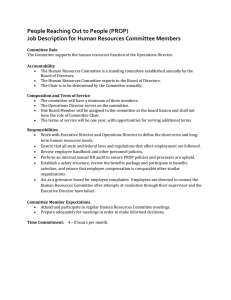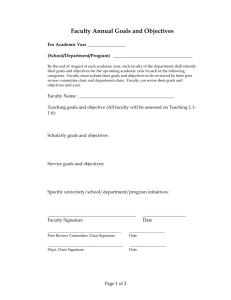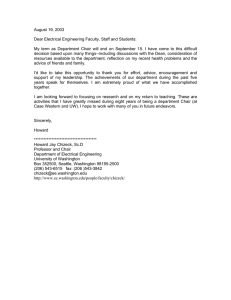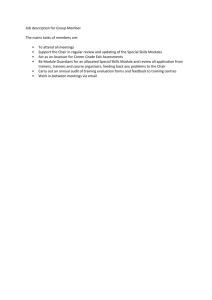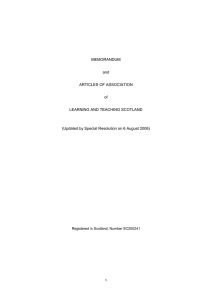ABSTRACT: 2013 ELAM Institutional Action Project Poster Symposium
advertisement
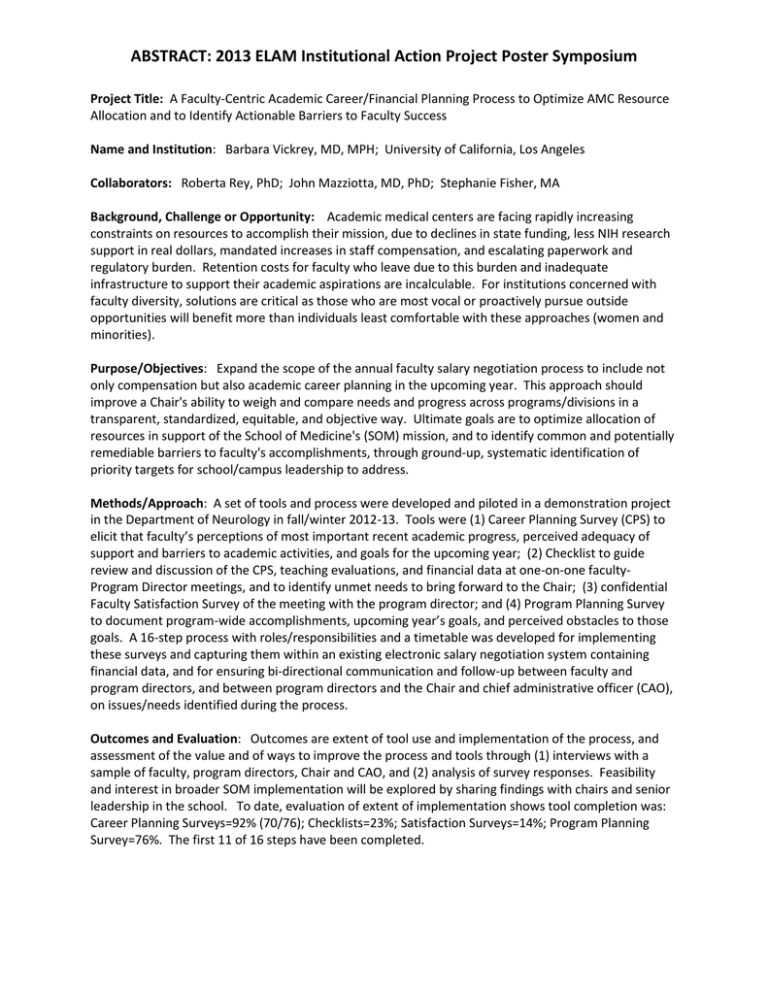
ABSTRACT: 2013 ELAM Institutional Action Project Poster Symposium Project Title: A Faculty-Centric Academic Career/Financial Planning Process to Optimize AMC Resource Allocation and to Identify Actionable Barriers to Faculty Success Name and Institution: Barbara Vickrey, MD, MPH; University of California, Los Angeles Collaborators: Roberta Rey, PhD; John Mazziotta, MD, PhD; Stephanie Fisher, MA Background, Challenge or Opportunity: Academic medical centers are facing rapidly increasing constraints on resources to accomplish their mission, due to declines in state funding, less NIH research support in real dollars, mandated increases in staff compensation, and escalating paperwork and regulatory burden. Retention costs for faculty who leave due to this burden and inadequate infrastructure to support their academic aspirations are incalculable. For institutions concerned with faculty diversity, solutions are critical as those who are most vocal or proactively pursue outside opportunities will benefit more than individuals least comfortable with these approaches (women and minorities). Purpose/Objectives: Expand the scope of the annual faculty salary negotiation process to include not only compensation but also academic career planning in the upcoming year. This approach should improve a Chair's ability to weigh and compare needs and progress across programs/divisions in a transparent, standardized, equitable, and objective way. Ultimate goals are to optimize allocation of resources in support of the School of Medicine's (SOM) mission, and to identify common and potentially remediable barriers to faculty's accomplishments, through ground-up, systematic identification of priority targets for school/campus leadership to address. Methods/Approach: A set of tools and process were developed and piloted in a demonstration project in the Department of Neurology in fall/winter 2012-13. Tools were (1) Career Planning Survey (CPS) to elicit that faculty’s perceptions of most important recent academic progress, perceived adequacy of support and barriers to academic activities, and goals for the upcoming year; (2) Checklist to guide review and discussion of the CPS, teaching evaluations, and financial data at one-on-one facultyProgram Director meetings, and to identify unmet needs to bring forward to the Chair; (3) confidential Faculty Satisfaction Survey of the meeting with the program director; and (4) Program Planning Survey to document program-wide accomplishments, upcoming year’s goals, and perceived obstacles to those goals. A 16-step process with roles/responsibilities and a timetable was developed for implementing these surveys and capturing them within an existing electronic salary negotiation system containing financial data, and for ensuring bi-directional communication and follow-up between faculty and program directors, and between program directors and the Chair and chief administrative officer (CAO), on issues/needs identified during the process. Outcomes and Evaluation: Outcomes are extent of tool use and implementation of the process, and assessment of the value and of ways to improve the process and tools through (1) interviews with a sample of faculty, program directors, Chair and CAO, and (2) analysis of survey responses. Feasibility and interest in broader SOM implementation will be explored by sharing findings with chairs and senior leadership in the school. To date, evaluation of extent of implementation shows tool completion was: Career Planning Surveys=92% (70/76); Checklists=23%; Satisfaction Surveys=14%; Program Planning Survey=76%. The first 11 of 16 steps have been completed.
